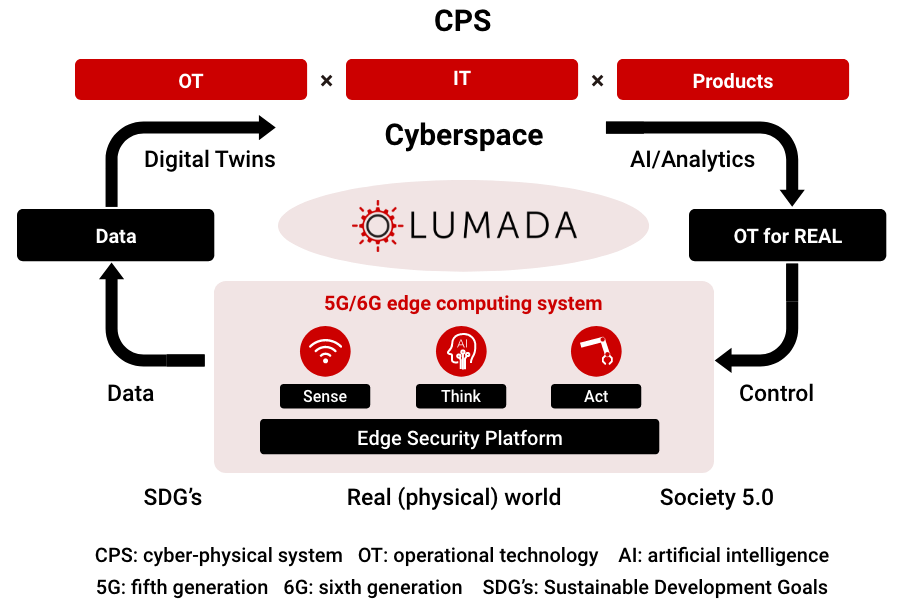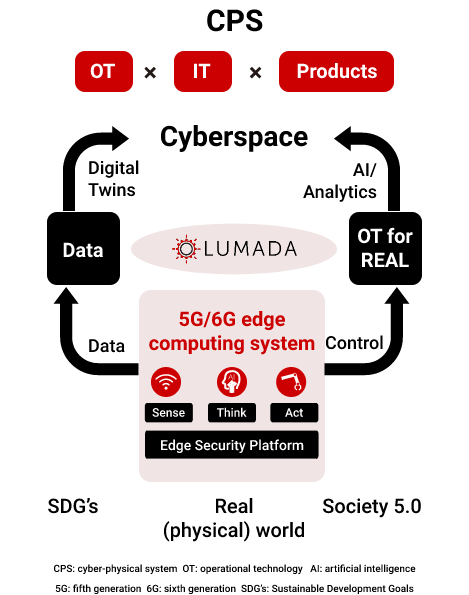Edge- the new paradigm for computing and innovation! Check out this short video about Edge Computing and its importance in the IoT era:
By 2030, IoT devices are estimated to reach 25.4 billion.1 By 2025, the amount of data generated by IoT devices is expected to reach 73.1 ZB (zettabytes).
Edge computing brings data storage, processing, and analytics closer to the source of data generation and consumption (on the edge of the network).
Instead of sending raw data collected from sensors, cameras, smartphones, etc. to a centralized data center, an edge server processes the data where it is actually generated, say in a hospital, factory floor, or a retail store, for quick intelligent actions.
Lumada is Hitachi's digital innovation platform for the IoT era. Edge Analytics that Hitachi enables shifting the load of data analysis out to the network edge, accelerating digital transformation (DX) through quick, easy steps of "Sense, Think, and Act"-
Edge analytics from Hitachi first involves the collection of data generated by operational technology (OT) and information technology (IT).
The data is then analyzed by edge AI or machine learning and the results are put to use in controlling equipment.
Hitachi enables intelligent action for productivity improvements such as urban infrastructure maintenance, environmental measurement, and the automation of industrial work processes.
The true worth of edge analytics is manifested when 5G/6G edge computing systems are used in tandem with Lumada in cyberspace and physical space.


1. https://dataprot.net/statistics/iot-statistics/#:~:text=In%202021%2C%20there%20were%20more,in%20economic%20value%20by%202025.
2. https://www.gartner.com/smarterwithgartner/what-edge-computing-means-for-infrastructure-and-operations-leaders